Acne Scars – Removal and Treatment – Auckland NZ
Many people who suffer from acne develop acne scarring in their teens or early twenties. There are a range of acne scar treatments available but it’s important to understand the type of scarring in order to choose the most effective treatment method, and to be aware of the difference in effectiveness that medical grade treatments can offer.
Below we discuss what causes acne scarring, acne scars removal and treatment and show some images of before and after treatment.
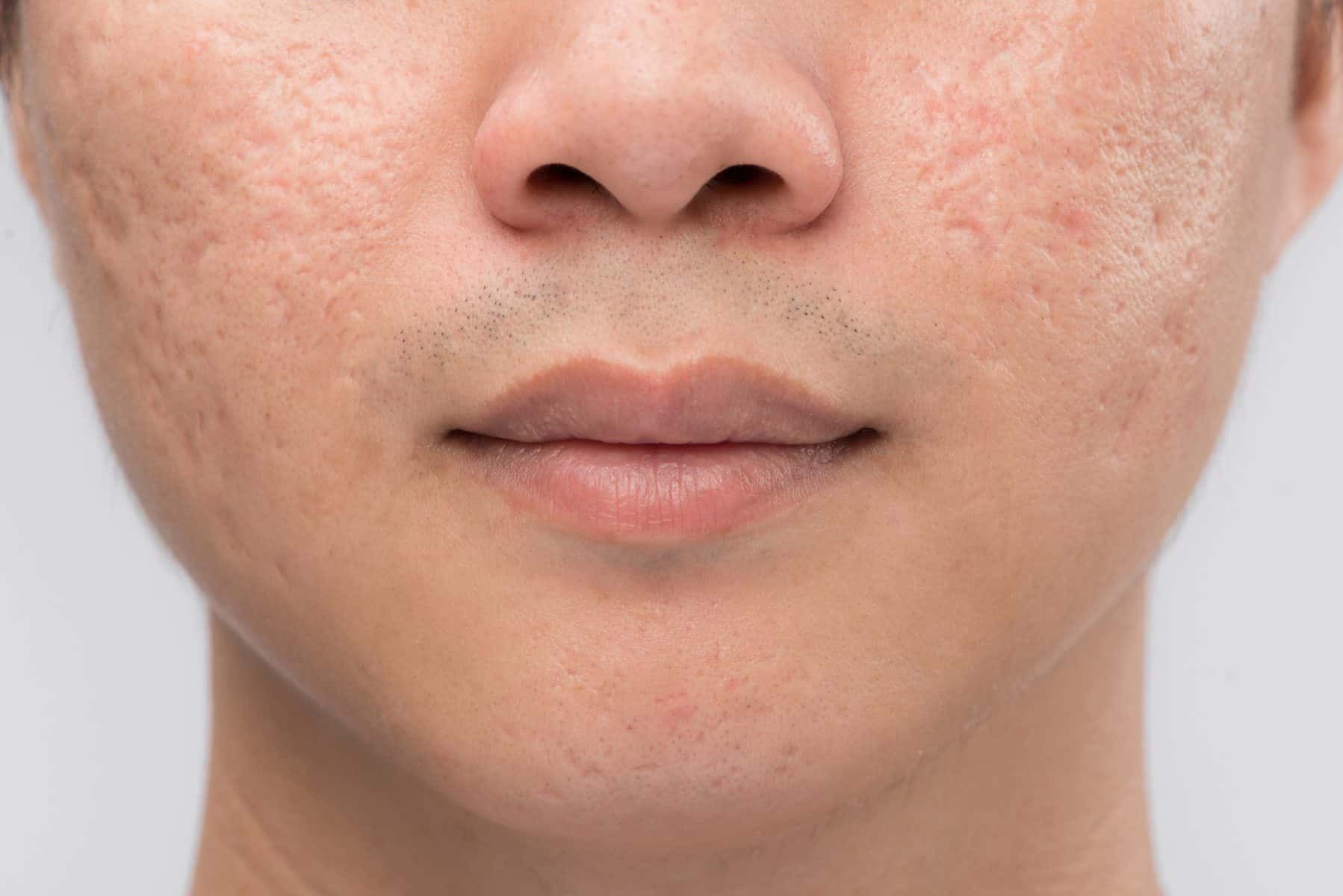
- Aesthetic Concerns
- Ageing
- Frown Lines
- Bags Under Eyes
- Drooping Eyes
- Crow’s Feet
- Sagging Face
- Loss of Facial Definition
- Thinning Lips
- Upper Lip Lines
- Bulging Arm Veins
- Skin
- Skin Pigmentation
- Rosacea / Facial Redness
- Acne Scarring
- Moles and Skin Tags
- Dull Skin
- Sweat
- Excessive Sweating
- Fat Pockets
- Abdomen
- Thighs
- Ankles
- Arms
Acne Scarring Causes
Active acne is an inflammatory process which causes fibrosis – the thickening and scarring of connective tissue – and is the cause of an acne scar. 30% of those with acne will experience some degree of acne scarring.
The more severe the acne and the longer it is active, the worse the acne scarring can be. The sooner active acne is treated, the lower the risk of scar tissue forming. Modern treatment of acne can be very effective in most cases.
Post-inflammatory changes in the colour of the skin may be seen after the inflammatory acne lesion heals. In fairer skin types it can be pink or purple (post-inflammatory erythema). In darker skin it can be brown (post-inflammatory pigmentation). In more severe cases people may experience white marks (post-inflammatory hypopigmentation).
Post-inflammatory erythema and post-inflammatory hyperpigmentation tend to lessen over months but unfortunately post-inflammatory hypopigmentation can be permanent.
Acne Scarring Removal and Treatment
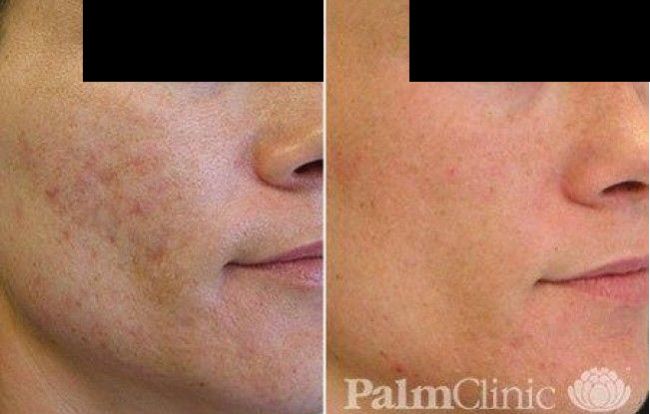
Before and after laser skin resurfacing Auckland, described below. Individual results may vary.
Treatment for Acne
If you have active acne the first priority is to treat that, as this is what will cause post-inflammatory colour changes and/or acne scarring.
If active acne is present, we will prescribe the appropriate treatment which can include good quality medical grade skincare specific for acne prone skin (this can include salicylic acid, vitamin C, benzoyl peroxide, retinoids and alpha hydroxy acids), acne medi-facials or chemical peels and, if necessary, antibiotics.
For more severe acne, your Palm Clinic doctor may suggest isotretinoin which is a prescription only oral form of vitamin A that is very effective at treating acne.
Treatment for Inflammatory Hyperpigmentation
To minimise inflammatory hyperpigmentation (brown marks) it is important to apply a good oil-free sunscreen that doesn’t exacerbate your acne, and minimise sun exposure where possible.
After an initial assessment your Palm Clinic skin therapist may suggest the use of skin lightening agents such as hydroquinone which inhibit the enzyme in your skin that creates pigment. They may also suggest medifacial/peels such as a glycolic acid chemical peel to reduce pigmentation.
Acne Scar Treatment
At Palm Clinic, we tailor the acne scar treatment to the type of acne scar. Scars can naturally reduce in appearance over time, but they tend to never completely resolve without active treatment.
Acne can cause different types of scars, these include:
- Ice pick scars which are narrow, deep and pitted
- Boxcar scars which is a wider depressed scar with a sharp edge
- Rolling scars which is a wider depressed scar with a sloping edge
- Atrophic scars which are flattened and thinned
- Keloid scar or hypertrophic scar which is thickened, lumpy and raised.
All acne scars aside from keloid scars can be addressed with one, or a combination of the below:
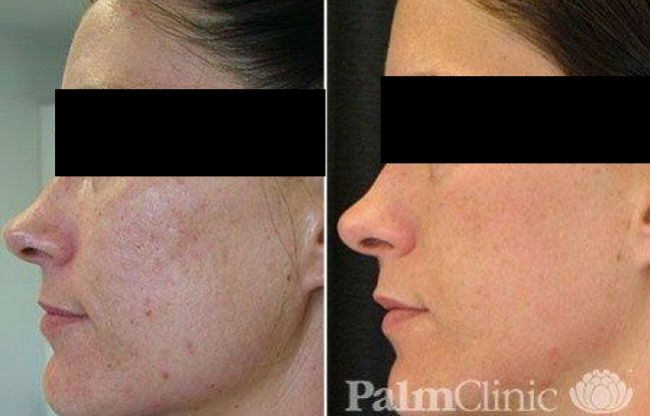
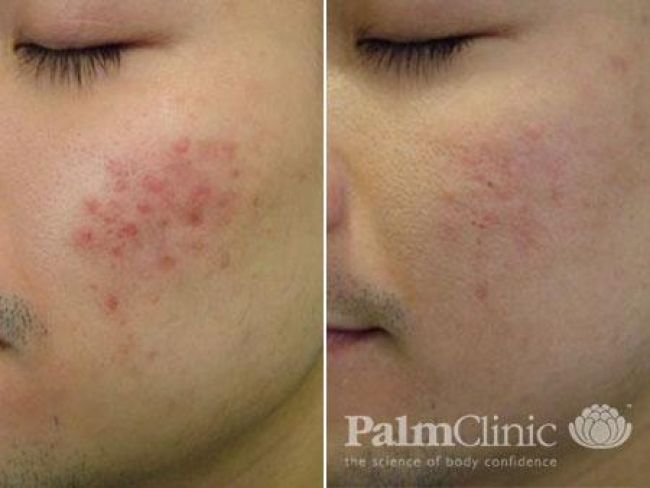
Before and after laser skin resurfacing Auckland. Individual results may vary.
ResurFX™ laser skin resurfacing: This is an excellent non-ablative laser treatment for acne scars – especially acne scars on cheeks – which involves damaging the skin in a controlled way right down to the dermis. The damage caused triggers the skin’s healing response which promotes collagen production leading to an improvement in skin texture.
Microneedling (Dermapen): Similar to laser skin resurfacing Auckland, microneedling creates damage to the skin to trigger new collagen growth which then improves the texture of the skin. Dermal needling (Dermapen) is less invasive than the ResurFX™ laser. It is an effective treatment and can achieve impressive results while having less down-time than laser skin treatment but it will take more treatments to achieve the same result.
Additionally, for boxcar scars and icepick scars, treatment using subcision and dermal filler may also be recommended. Subcision physically breaks up the fibrous tissue that is tethering the skin down, this works well when combined with injection of dermal filler (hyaluronic acid) which is a clear gel that lifts the tissue up where it is injected.
A hypertrophic scar or keloid scar can be treated with topical steroids or a steroid injection. They may also improve with the use of silicone gel dressings, skin needling (Dermapen) and/or ResurFX laser. Unfortunately, a hypertrophic scar or keloid scar can be very stubborn to treat and may recur after successful treatment.
Acne Scars Before and After Treatment
To see more photos of acne scars before and after treatment, please visit our gallery.

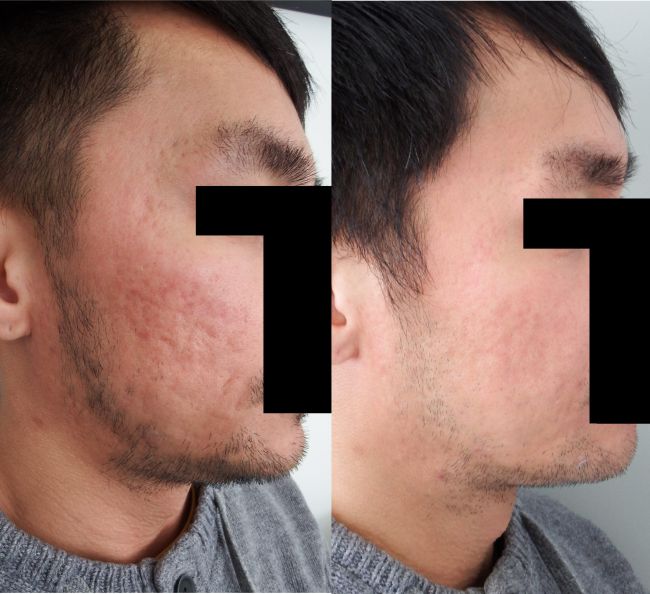
Dermal fillers are used to significantly reduce the depth of these acne scars. The next step is resurfacing laser to improve the redness and texture of the scars

Subcision with dermal fillers to improve acne scarring. Photos taken immediately after treatment.
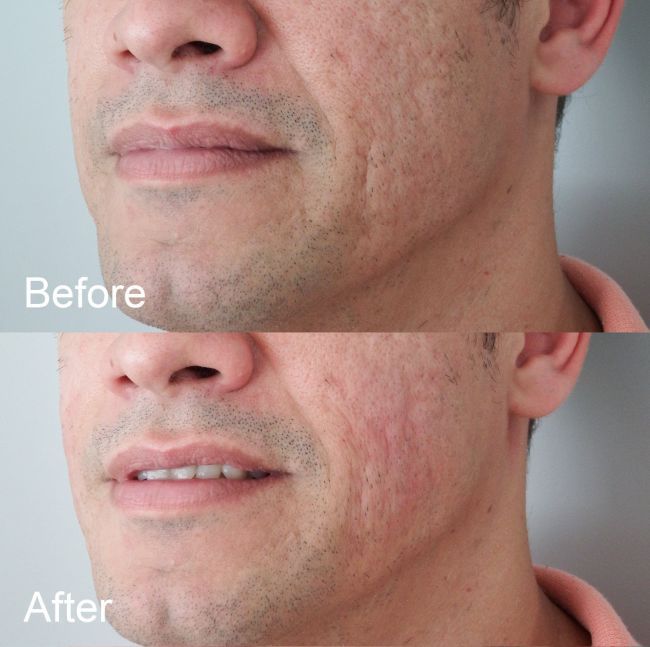
Individual results may vary.
